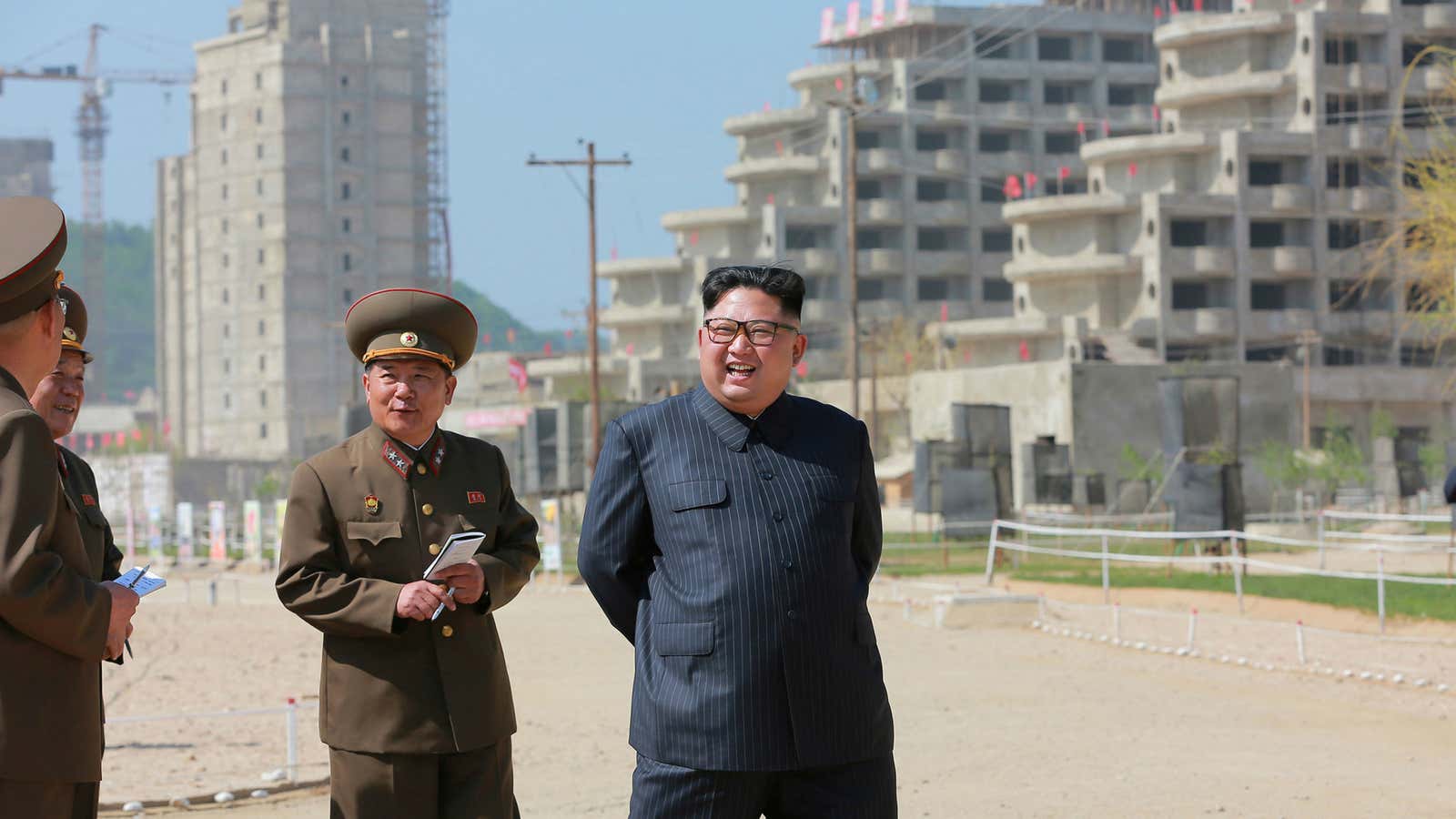North Korea is an incredibly poor country. The secretive, one-party state’s disastrous handling of its economy has left the majority of the country’s 25 million people destitute. Incompetent central planning and the elimination of markets has led to a GDP per capita of less than $2,000, among the lowest in the world.
Yet, there are signs that the North Korean economy is improving. Even in the face of heavy sanctions, imposed to compel Pyongyang to give up its nuclear weapons program, the state is making small, but real progress. According to estimates from the South Korea-based Bank of Korea (pdf), the north’s economy grew by 3.9% in 2016. That was, by far, its best year for more than a decade. Although the Bank of Korea is one of the best sources of North Korean economic statistics, it is notoriously difficult to collect accurate data on the country, so it is best to take these numbers as approximations.
Although data have not been released for 2017, many experts believe that the economy may still be growing, albeit more slowly. Economist Marcus Noland, a leading researcher on the North Korean economy, told Quartz by email that while sanctions and the end of the global boom in commodity prices have hurt the economy, the liberalization of domestic markets has probably helped the north maintain growth. The relaxation of rules includes giving managers of state-owned enterprises more autonomy and letting North Koreans make private investments in state-owned firms.
Perhaps most importantly, the government increasingly allows individuals to trade basic consumer goods, like food and clothing, with one another. Journalist Barbara Demick, author of Nothing to Envy: Ordinary Lives of in North Korea, credits current North Korean leader Kim Jong Un for the change. On the podcast “The Ezra Klein Show,” Demick explains that shortly after his father Kim Jong Il died in 2011, Kim Jong Un lifted many of the restrictions on local markets. Demick says this won the young leader significant public support.
From 2009 to 2013 official North Korean trade more than tripled, from about $1 billion to over $3 billion (illegal trade is substantial, but difficult to estimate). The country’s main exports are coal and textiles. Over 80% of North Korean exports went to China in 2016 and 2017.
But in 2017, the world intensified sanctions, and North Korea’s exports plummeted to under $2 billion. The fourth quarter of 2017 was particularly bad, with exports falling below $300 million (pdf), about a third of the amount in the same period the year before. The decline was driven by China’s decision take fewer North Korean exports, in an effort to bring the country to negotiating table over its nuclear weapons.
If sanctions are reduced, and North Korea further opens itself to trade, Noland believes the country’s economy could truly take off. Bordering economic powerhouses China and South Korea, and just across the sea from Japan, North Korea is well placed to take advantage of trade relations with its richer neighbors. Noland’s research suggests freer trade would lead to a huge expansion of the manufacturing and mining industries and, as a result, massive improvements in living standards. The ever-widening gap in average incomes between North and South Koreans would begin to shrink.
Even with the recent improvements, the state of the North Korean economy is dire. The upcoming summit between the US and North Korea is pitched as the first step in achieving peace and disarming a rogue regime, but the people with perhaps the most at stake are ordinary North Koreans looking for a chance to prosper after generations of poverty.
